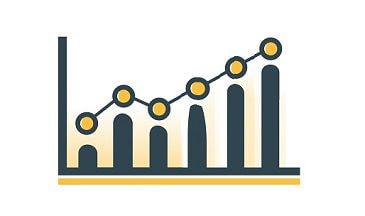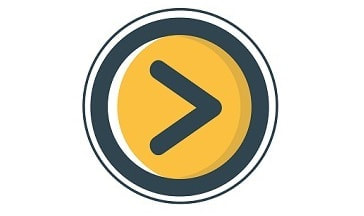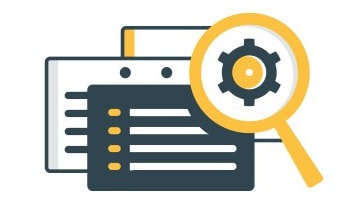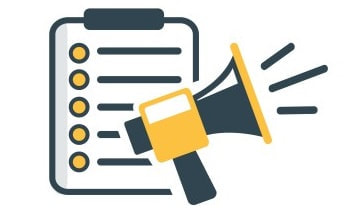Squirrel Peer to Peer Lending Review
Squirrel offers home loans, residential construction loans and personal loans for homeowners.
Updated 6 April 2023
Summary
There are two ways for retail lenders or investors to invest in Squirrel term investments.
1. Direct via Squirrel’s investment platform:
Up-to-date information relating to investor rate of return can be found on Squirrel’s website.
Squirrel On-Call Account:
Squirrel term Investments
2. Via the Squirrel Monthly Income Fund
Squirrel’s website publishes the latest return information.
Summary
- Squirrel is an Auckland-based company that offers home loans, residential construction loans and personal loans for homeowners.
- Squirrel Home Loans allow borrowing up to $2,000,000, secured by a first mortgage. Loans can be used to fund the purchase of owner-occupied or investment properties, with a maximum loan term of 7 years.
- Construction Loans allow borrowing up to $2,000,000, secured by first mortgage over New Zealand residential property. Loans can be used to fund residential housing construction (small-scale) or the purchase of development land, with a maximum loan term of 2 years.
- Personal Loans – Squirrel offers loans to fund renovations, partial deposits on a house, or purchase a tiny home etc, with terms ranging from 1 to 7 years. Specifically:
- The Homeowners loan allows borrowing up to $20,000 unsecured, or up to $70,000 secured to fund home renovations or upgrades.
- The Tiny House loan allows borrowing up to $70,000 (no deposit required) or $100,000 (deposit required) to fund the purchase of a tiny home. Loans secured against the tiny home.
- The Launchpad loan allows borrowing up to to $120,000 to top up house deposit to meet 20% of property loan-to-value ratio (LVR) – for high earners. Loans secured against the property.
- Up-to-date information relating to borrower interest rates and establishment fees can be found on Squirrel’s website and borrowers can make early repayments without penalty.
There are two ways for retail lenders or investors to invest in Squirrel term investments.
1. Direct via Squirrel’s investment platform:
Up-to-date information relating to investor rate of return can be found on Squirrel’s website.
Squirrel On-Call Account:
- This is a fee-free high interest savings account with your money on-call.
- Squirrel’s On-Call Account in many cases offers an interest rate higher than any other on-call account in New Zealand. Our discussions with the Squirrel team confirm transfers are fast; it takes about 2 hours for money to arrive into the Squirrel On-Call Account from your bank account, and about 2 hours back the other way. The money in the On-Call Account sits in a bank account with BNZ earning interest, which Squirrel passes onto investors.
Squirrel term Investments
- Minimum investment is $100
- Funds can be invested in home, construction and personal loans for New Zealand homeowners which are secured or unsecured, depending on the loan type, size and term. Where loans are secured, this is typically against New Zealand residential property.
- Squirrel's publishes arrears and default rates on its website for each investment class
- Squirrel manages "Reserve Funds" associated with each term investment type. The Reserve Funds help to protect investor funds by topping up an investor's capital if a loan cannot be repaid. This is done at no charge to the investor. The Reserve Funds are not guaranteed, and Squirrel provides performance information on its website.
- In early 2023, Squirrel introduced interest on its On-Call Account, the highest “no strings attached” interest rate of any savings account in the NZ market at the time. Un-invested cash in the Squirrel On-Call account is held on trust in a BNZ bank account. Interest is accrued daily and paid monthly into the On-Call account. The current Call-Account interest rate can be found on the Squirrel website.
- Investors can access their money at any time (at no cost) by selling their loans on the Squirrel secondary market, provided another investor is willing to take over the loan. Squirrel doesn’t guaranteed that you will be able to sell – there are stats on Squirrel’s website showing how long it takes to sell investments.
- Squirrel charges a service margin on each loan, which varies based on the risk grade of the borrower and the loan type. The margin is charged to investors / lenders as a deduction from borrower repayments. (Note: The advertised interest rate for each Squirrel term investment is the rate of return that investors will receive, net of service margin and reserve fund deductions. Resident Withholding Tax is the only deduction made on investor returns.)
- Interest and principal repayments from borrowers can be withdrawn or automatically reinvested in investors’ preferred term investment type. .
- Squirrel's loans are funded by everyday Kiwi, and fund managers.
2. Via the Squirrel Monthly Income Fund
Squirrel’s website publishes the latest return information.
- Lenders can invest in the Squirrel Monthly Income Fund (SMIF) via Squirrel’s partners at InvestNow. The SMIF offers a “hands off” alternative for lenders looking to invest in Squirrel term investments, and is managed by Implemented Investment Services.
- Funds are invested in the same term investments available via Squirrel’s own platform, but the distribution of funds is managed on your behalf.
- Returns are paid monthly and can be reinvested or withdrawn to your InvestNow account.
- Minimum initial investment of $500, and $100 subsequently.
- There is a notice period of 30 days to get your money out of your investment, with no fees charged.
- There is a fund management fee charged to investors, of 1.70%p.a. including GST.
- You still have access to Squirrel’s "Reserve Funds" associated with each term investment type. The Reserve Funds help to protect investor funds by topping up an investor's capital if a loan cannot be repaid. This is done at no charge to the investor.
- PIE tax is applied to investor returns, which can be an after tax benefit for some investors depending on their Resident Withholding Tax rate. You can read more about PIE Term deposits here.
In this guide, we look at Squirrel for Borrowers and Squirrel for Lenders separately to best understand the pros and cons of the offers. Our guide covers:
Squirrel Background
Launched in 2015, Squirrel is the second-largest peer-to-peer lending (P2P) platform to launch in New Zealand. This complements Squirrel's mortgage advice business, one of the largest in NZ, which launched in 2008.
The platform allows retail investors (i.e. individuals) to lend money to New Zealand consumers seeking home loans, construction loans and personal loans for homeowners, via term investments. Loans may be secured or unsecured, depending on the loan term, type and value.
In November 2021, Squirrel also launched the Squirrel Monthly Income Fund (SMIF), which offers funders a “hands-off” way to invest in its term investment products (more details are published on the Squirrel website).
Today, Squirrel has lent to thousands of borrowers all over Aotearoa via its platform. There are four points of difference between Squirrel and other peer-to-peer lenders:
Squirrel charges fees to borrowers and it acts merely as the middleman by way of providing a platform. This is standard practice for P2P platforms.
The platform allows retail investors (i.e. individuals) to lend money to New Zealand consumers seeking home loans, construction loans and personal loans for homeowners, via term investments. Loans may be secured or unsecured, depending on the loan term, type and value.
In November 2021, Squirrel also launched the Squirrel Monthly Income Fund (SMIF), which offers funders a “hands-off” way to invest in its term investment products (more details are published on the Squirrel website).
Today, Squirrel has lent to thousands of borrowers all over Aotearoa via its platform. There are four points of difference between Squirrel and other peer-to-peer lenders:
- Squirrel only lends to New Zealand homeowners, or those in the process of becoming homeowners, reflecting their deep understanding of this market as one of NZ’s largest mortgage brokers. And with most of Squirrel’s secured loans backed by New Zealand residential mortgages, this provides added protection for investors.
- Squirrel offers loan protection (its "Reserve Funds") to help protect investors’ funds. Squirrel's platform builds up Reserve Funds associated with each investment classes, via borrower interest payments. Squirrel is unique in offering this protection for investors should unpaid loans turn into bad debts. Squirrel can offer more accuracy in expected investor returns given the reduced chance of bad debts lowering an investor's capital.
- Squirrel offers a secondary market for loans. Squirrel’s secondary market is a free service which allows investors on the Squirrel platform to sell their investments to other investors in order to access funds prior to the end of the investment term (as long as another investor is willing to take over the loan).
- There are no fees charged to lenders (“investors”) who invest direct on the Squirrel platform. The only deduction from Investor Returns is Resident Withholding Tax.
Squirrel charges fees to borrowers and it acts merely as the middleman by way of providing a platform. This is standard practice for P2P platforms.
Squirrel Review: Borrowers
Squirrel has a standard application process, and only individuals who meet the following criteria can borrow from the platform:
Assessments are made fairly quickly, and if your loan is approved you have 30 days to accept it. You will be assigned a credit grade which ultimately decides the interest rate on the loan. The better your credit grade, the lower the interest rate. Squirrel offers interest rate ranges for unsecured and secured loans:
- Be at least 18 years old,
- Be able to afford the loan you are applying for,
- Have either a valid New Zealand Driver’s Licence or a valid New Zealand Passport to verify their identity,
- Provide bank statements for the last three months
- Pass credit checks with both Equifax and Centrix, to ensure you have no outstanding debts or credit card bills.
- You’ll need to list all income sources, your assets (e.g. house, investments, savings etc.), liabilities (e.g. credit cards, personal loans etc.) and your mortgage or rent expenses (separately from liabilities).
Assessments are made fairly quickly, and if your loan is approved you have 30 days to accept it. You will be assigned a credit grade which ultimately decides the interest rate on the loan. The better your credit grade, the lower the interest rate. Squirrel offers interest rate ranges for unsecured and secured loans:
- Squirrel Home Loans allow borrowing up to $2,000,000, secured by a first mortgage. Loans can be used to fund the purchase of owner-occupied or investment properties, with a maximum loan term of 7 years.
- Construction Loans allow borrowing up to $2,000,000, secured by first mortgage over New Zealand residential property. Loans can be used to fund residential housing construction (small-scale) or the purchase of development land, with a maximum loan term of 2 years.
- Personal Loans – Squirrel offers loans to fund renovations, partial deposits on a house, or purchase a tiny home etc, with terms ranging from 1 to 7 years. Specifically:
- The Homeowners loan allows borrowing up to $20,000 unsecured, or up to $70,000 secured to fund home renovations or upgrades.
- The Tiny House loan allows borrowing up to $70,000 (no deposit required) or $100,000 (deposit required) to fund the purchase of a tiny home. Loans secured against the tiny home.
- The Launchpad loan allows borrowing up to to $120,000 to top up house deposit to meet 20% of property loan-to-value ratio (LVR) – for high earners. Loans secured against the property.
- Up-to-date information relating to borrower interest rates and establishment fees can be found on Squirrel’s website and borrowers can make early repayments without penalty.
Squirrel Borrowing Interest Rates
When a loan application is approved, it is assigned a “risk grade” with interest rates varying based on the borrower risk grade assigned. You can find up to date borrower interest rates on Squirrel’s website.
Squirrel: Borrowing Conclusion
- Squirrel offers a no-obligation quote for a loan, and the process is easy to follow and done online.
- Any potential borrower can (usually) get a "yes" or "no" from Squirrel within 24 hours, and if it's a "yes" they'll get an interest rate specific to their application.
- Borrowers can compare the Squirrel offer with that of others as it's valid for up to 30 days.
- Repayments work like any other debt, and there is a credit team to talk to if the borrower falls behind or needs to make a hardship application. You can find the fees charged in relation to loans on Squirrel's website.
Squirrel Review: Lenders
Investing with Squirrel is another alternative to putting money in a term deposit, corporate bond or an investment in the share-market – and has its own risk profile.
The offer is simple - you lend your money directly to Kiwi homeowners looking to borrow, with investment terms ranging from 1 to 7 years, depending on the term investment type.
Squirrel offers three different term investment types or “classes” for lenders to invest in:
1. Home loan investment class:
2. Construction loan investment class:
3. Personal loan investment class:
Important: The platform is not without its risks and rewards, which we discuss in detail below.
The offer is simple - you lend your money directly to Kiwi homeowners looking to borrow, with investment terms ranging from 1 to 7 years, depending on the term investment type.
Squirrel offers three different term investment types or “classes” for lenders to invest in:
1. Home loan investment class:
- Investment term of up to 7 years, with the option to sell via Squirrel’s secondary market place
- Risk rating – 2 (1 = lower risk, 7 = higher risk)
- Variable interest returns
2. Construction loan investment class:
- Investment term of up to 2 years, with the option to sell via Squirrel’s secondary market place
- Risk rating – 3 (1 = lower risk, 7 = higher risk)
- Variable interest returns – check the website for up to date interest rates
3. Personal loan investment class:
- Investment terms of between 1 – 7 years, with the option to sell via Squirrel’s secondary market.
- Risk rating – 5 (1 = lower risk, 7 = higher risk)
- Fixed interest returns – check the website for up to date interest rates.
Important: The platform is not without its risks and rewards, which we discuss in detail below.
Squirrel Investor Returns
Squirrel Investor Returns
Squirrel advertises returns up to around 7.5% per annum via its platform, net of investor fees.
Who is your money lent to?
Squirrel lends to only qualified and creditworthy borrowers. Specifically:
Unlike other P2P platforms, investors are not presented with individual loan requests. Instead, Squirrel allocates loans automatically, with money placed with borrowers at a range of interest rates depending on the individual risk profile.
Squirrel advertises returns up to around 7.5% per annum via its platform, net of investor fees.
Who is your money lent to?
Squirrel lends to only qualified and creditworthy borrowers. Specifically:
- Borrowers must be over 18 years of age, have good credit history and the ability to service the loan and be a New Zealand resident.
- Each loan is classified with a risk rating depending on the borrowers income, credit risk, and security.
Unlike other P2P platforms, investors are not presented with individual loan requests. Instead, Squirrel allocates loans automatically, with money placed with borrowers at a range of interest rates depending on the individual risk profile.
Squirrel Default Rates and the Loan Shield Scheme
As at 31st December 2022, the net default rate across Squirrel’s personal loan book was 1.10% once adjusted for funds recovered on those loans. There had been no Home Loan or Construction Loan defaults at this date.
Further relevant information:
Further relevant information:
- The level of bad debt is less of a risk factor for investors thanks to the Reserve Funds Squirrel has established for each of its investment classes (something unique to the P2P market in New Zealand).
- Of every interest payment made by Squirrel borrowers, an amount is deducted and sent to the Reserve Funds – and, to date, the Reserve Funds have protected every dollar of investors / lenders money.
- While borrowers are credit risk graded depending on their risk profile, Squirrel actively invests in a range of loans over a range of dates on your behalf.
Squirrel Borrowing Volumes
The amount a platform lends is important for two principal reasons:
Cumulatively, Squirrel has lent approximately $400 million since launching in 2015.
- Credit Modelling: The more Squirrel lends, the more data it has to build its credit processes and report to investors. Having launched the platform in late 2015, Squirrel has now lent around $400m to borrowers (and growing). This supports further improvement in its credit risk assessment criteria and processes.
- Higher investment opportunities: The more borrowers, the more funding opportunities for investors. The more the platform lends, the greater the probability of new lenders available to fulfil future loans and/or purchase existing loans on the secondary market.
Cumulatively, Squirrel has lent approximately $400 million since launching in 2015.
Squirrel Loan Security
Squirrel’s home loans and constructions loans are all secured by first mortgages over residential property located in New Zealand. Squirrel’s personal loans for homeowners may either be unsecured or secured, depending on the loan value. Roughly 90% of Squirrel’s overall personal loan book is secured, usually against New Zealand residential property or other assets such as tiny homes.
The current average loan value across its different investment classes are as follows:
The principal risk is a large number of borrowers defaulting on their loan commitments, resulting from negative economic conditions and/or poor credit assessment by Squirrel.
Squirrel aims to help protect lenders in three principal ways:
The current average loan value across its different investment classes are as follows:
- Home loans: approximately $800,000
- Construction loans: approximately $900,000
- Personal loans: approximately $50,000 for new loans
The principal risk is a large number of borrowers defaulting on their loan commitments, resulting from negative economic conditions and/or poor credit assessment by Squirrel.
Squirrel aims to help protect lenders in three principal ways:
- Credit assessment - Squirrel claims to have implemented appropriate systems and processes for determining the suitability of a borrower and his or her ability to afford loan repayments. With over 7 years of history now, that claim is increasingly verified.
- Security on loans - Security for secured loans generally ranges from first-mortgages over residential property for home and construction loans, to other assets such as motor vehicles for personal loans.
- Reserve Fund - Squirrel has established a Reserve Fund for each of its investment classes, to help protect investors from credit losses.
What if a borrower doesn’t repay a Squirrel loan?
- In the event a borrower misses a payment, Squirrel charges a dishonour fee (to cover its own credit management expenses) and penalty interest whilst the loan is in arrears (which is ceded into the reserve fund). Squirrel contacts the borrower to ask for payment – in most cases the payment is promptly made. If not, Squirrel will continue to follow up with the borrower. If three repayments fail, Squirrel reserves the right to engage with its external debt collection agency to take over the collection of the loan.
- The Reserve Fund associated with that investment class kicks in immediately on repayment default i.e. if an expected repayment is not received, the Reserve Fund steps in and pays the investor both principal and interest, provided there are sufficient funds available. Squirrel's collections team will get in touch with the borrower immediately to attempt to rectify the situation and when/if payments are caught up, the Reserve Fund is repaid.
- If the borrower has not arranged for regular repayments of the outstanding debt within 90 days, they are sent to an external debt collection agency. Following feedback from the external agency, the collections team will decide on the next course of action e.g. proceedings and/or write-off.
- All costs associated with the collection of the loan are paid by Squirrel or the borrower and not the investor / lender. This includes debt collection, legal fees and debtor management.
- Because of Squirrel’s Reserve Funds, investors will not be notified if a borrower’s loan goes into arrears and/or is written-off. This is because the Fund is used to pay back the investors, as scheduled.
- Squirrel will only notify investors if the Reserve Fund does not have sufficient reserves available to repay defaulted loans.
- In such circumstances, all investors would, in the first instance, receive a haircut on their interest repayments until the reserve fund is replenished.
- Only in the case that the Reserve Fund cannot be replenished using future interest repayments alone would investor principal be at risk.
- Currently Squirrel is putting aside roughly 50% above the expected bad debt rate to reduce the likelihood of such an occurrence. You can see the amount they are reserving and compare it to the credit risk in each asset class on Squirrel’s website – we believe they are transparent with their information and work to inform investors.
Withdrawing Squirrel Funds
Direct investors (i.e. lenders) have the flexibility to get early access to their invested funds using Squirrel’s secondary market. There are no fees for investors wanting to list their investments for sale on the platform. Squirrel displays data on its website about how long it takes to sell an investment.
Squirrel does not guarantee that there will be other investors willing to buy your investment, and you may need to hold your investment to term.
Investors in the Squirrel Monthly Income Fund, via InvestNow, are required to give 30 days’ notice in order to withdraw funds, and there are no fees associated with doing so.
Squirrel does not guarantee that there will be other investors willing to buy your investment, and you may need to hold your investment to term.
Investors in the Squirrel Monthly Income Fund, via InvestNow, are required to give 30 days’ notice in order to withdraw funds, and there are no fees associated with doing so.
Squirrel: Lending Conclusion
- Squirrel offers a unique opportunity for New Zealanders looking for diversity investments.
- Squirrel offers a number of benefits such as loan protection, secondary market investment redemption and passive investment via the Monthly Income Fund.
- Returns on investment are likely to range between 4.50% and 8.00% over the interest rate cycle. You can see up to date investment interest rates on Squirrel's website.
- There are no fees for investors / lenders on the Squirrel platform at the published rates of return. There is a platform management fee of 1.70% incl. GST for investors in the Squirrel Monthly Income Fund, however that also includes Squirrel’s margin, so there is not too much difference on a like for like basis.
Squirrel Fees – How Fees are Charged to Borrowers and Lenders
Squirrel is a platform and it earns fees from borrowers and earns a margin. None of the fees collected are paid to lenders.
Borrower fees
Investor / lender fees
1. Service margins:
A service margin is charged to investors / lenders as a deduction from borrower repayments. The applicable service margin depends on the risk grade of the borrower – lower-risk loans carry a lower service margin.
Please note: The advertised interest rate for each Squirrel term investment is the rate of return that investors will receive, net of service margin and reserve fund deductions.
Current Squirrel service margins:
Annual fund charges:
Borrower fees
- Fees which may be charged to borrowers include establishment fees, default fees, dishonour fees, default interest rates, progress payment fees.
- You can find a full list of borrower fees on the Squirrel website.
Investor / lender fees
1. Service margins:
A service margin is charged to investors / lenders as a deduction from borrower repayments. The applicable service margin depends on the risk grade of the borrower – lower-risk loans carry a lower service margin.
Please note: The advertised interest rate for each Squirrel term investment is the rate of return that investors will receive, net of service margin and reserve fund deductions.
Current Squirrel service margins:
- Personal loans: 1.45% - 5.95% p.a. of the loan balance deducted from the gross loan repayment
- Home loans & Construction loans: 0.70% - 2.75% p.a. of the loan balance deducted from the gross loan repayment
Annual fund charges:
- Squirrel P2P term investments (via the Squirrel platform): nil (margin and reserve levy is already deducted from the published returns)
- Squirrel Monthly Income Fund (via InvestNow): 1.70% p.a. incl. GST (this includes Squirrels margin and the fees associated with running the Fund)
Squirrel Investor Must-Know Facts
Your money can be withdrawn earlySquirrel's loan terms are typically 1 to 7 years in length, but if you want to access your money early, you can do so.
For those investing directly via the Squirrel platform:
For those investing into Squirrel’s Monthly Income Fund via InvestNow.
|
Squirrel’s Reserve Funds help reduce the impact of losses
|
Repayments can be automatically withdrawn or re-investedAs loan repayments are made monthly by borrowers, a typical lender will usually see a positive balance in their account.
This can be automatically transferred to your bank account, or re-invested into your preferred term investment type when the On-Call account balance reaches at least $100. The same is true for investors via InvestNow, who may choose to have their monthly payments reinvested or withdrawn to their nominated bank account. |
Squirreldoesn't share ANY borrower informationThe investor doesn’t see any details about the loan(s) they are investing in. The investor simply selects their preferred investment type and term. As the Reserve Funds functions to absorb arrears/defaults, an investor is effectively investing in the loan book rather than an individual borrower as such.
|
Are you a Squirrel investor or borrower, and have something you'd like to share with us? We'd love to hear from you - contact our team with your experiences.














